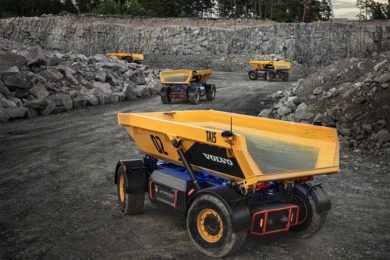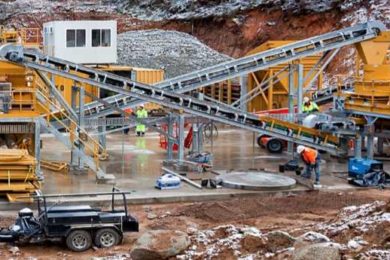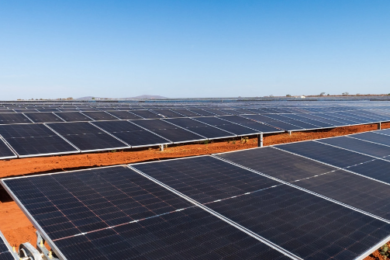The question of whether bigger means better in mining trucks was raised again recently in a blog post by Uwe Muller, Head of Sales & Marketing Off-Road Solutions at Volvo Autonomous Solutions. Of course one issue with today’s large rigid mining trucks is their CO2 emissions, which motivated a Volvo research project as far back as 2015 on whether these haul trucks could be powered by batteries, thus reducing environmental impact.
With the technology available at the time, it was clear that electrification in this format wasn’t a practical option. “For one, we’d need to add a lot of batteries, which is very costly. Secondly, extra batteries equal excess weight, making the process far less efficient. That’s when we turned our attention to the trucks themselves. Muller comments: “The quarrying and mining industry has remained largely unchanged for the past 50 years…as production increases, so does the size of the vehicles involved. Logical, right? But what if we turned this theory on its head? What if, in fact, bigger isn’t better? Instead of two huge machines, why not a fleet of small ones? From work-harder elephants to work-smarter ants.”
Downsizing means the weight and capacity of batteries is no longer an issue, therefore enabling electrification. “Smaller machines and a continuous opportunity charging concept present a completely different opportunity. And we’re able to share battery technology with our colleagues within the Volvo Group, who have used similar batteries in the past for hybrid buses.”
But Muller says it’s not just from a sustainability point of view that downsizing is changing the game. There are also multiple benefits from a process perspective. “Over the years, hauling trucks have grown to reduce operators – this means the loading tool has also grown to match the bigger vehicles. So, while upscaling of hauling tools does reduce operators, companies are landed with a larger loading tool that’s utilised less. In principle, this means just to save operators, companies must increase capacity on the loading side they don’t really use, essentially adding a non-utilised capacity to their process.”
He argues that if we switch this thinking around and instead choose smaller vehicles, “we can reduce the size of the loading tool, and in turn, the cost and increase utilisation, because there are more transport vehicles in the process. This is greatly beneficial from both a commercial and process perspective.”
When you’re working with, for example, 100 ton trucks, the only way to modify production capacity is by adding or removing a vehicle. “On the other hand, if a company has a fleet of smaller vehicles, it can adapt more easily. Similarly, if one of a pair of 100-ton trucks goes down, 50% capacity is lost. Compare this to a fleet of 10 smaller vehicles – one vehicle going down only equates to 10% capacity lost. In this regard, downsizing increases uptime and therefore productivity – you could also call this increasing process resolution.”
Smaller trucks also mean smaller haul routes – these narrower routes enable better utilisation of quarries and mines and in turn better utilisation of the available material. And if a company’s process demands trucks to pass one another, smaller vehicles make things a lot simpler.
But downsizing is not a 1:1 replacement. “Companies can’t simply do away with their old vehicles, beckon in a fleet of small machines and expect an instantly better outcome. A downsized fleet demands a wider perspective from a planning point of view. Potholes that wouldn’t perturb a human-sized wheel present a challenge for smaller tyres; a downsized wheel loader means smaller blocks of material that can be handled. But these challenges are minor in the grand scheme of things and with proper planning, a downsized fleet can consistently produce better material and make operations run a lot more smoothly.”
At Volvo Autonomous Solutions, years of research within the field of downsizing resulted in TARA, a complete autonomous haulage system designed for use in confined areas such as quarries and mines. Consisting of a fleet of Volvo TA15s, the TARA solution cuts emissions, increases efficiency and optimises machine utilisation. It’s also offered as Transport-as-a-Service, meaning companies only pay for the services they use, rather than buying costly machinery.
Muller believes that the biggest barrier that exists to downsizing today is not technology, but rather a conservative mindset and focus on experience. “The switch to smaller machines is a change management question. How can you persuade people that something they’ve been told for half a century is no longer right? Therefore, alongside rapidly evolving technology, education is just as important – we need to get the operators and people involved in the process on board for the shift to happen. Technology is one thing, but without adoption from humans, the concept of downsizing will remain the elephant in the room.”










